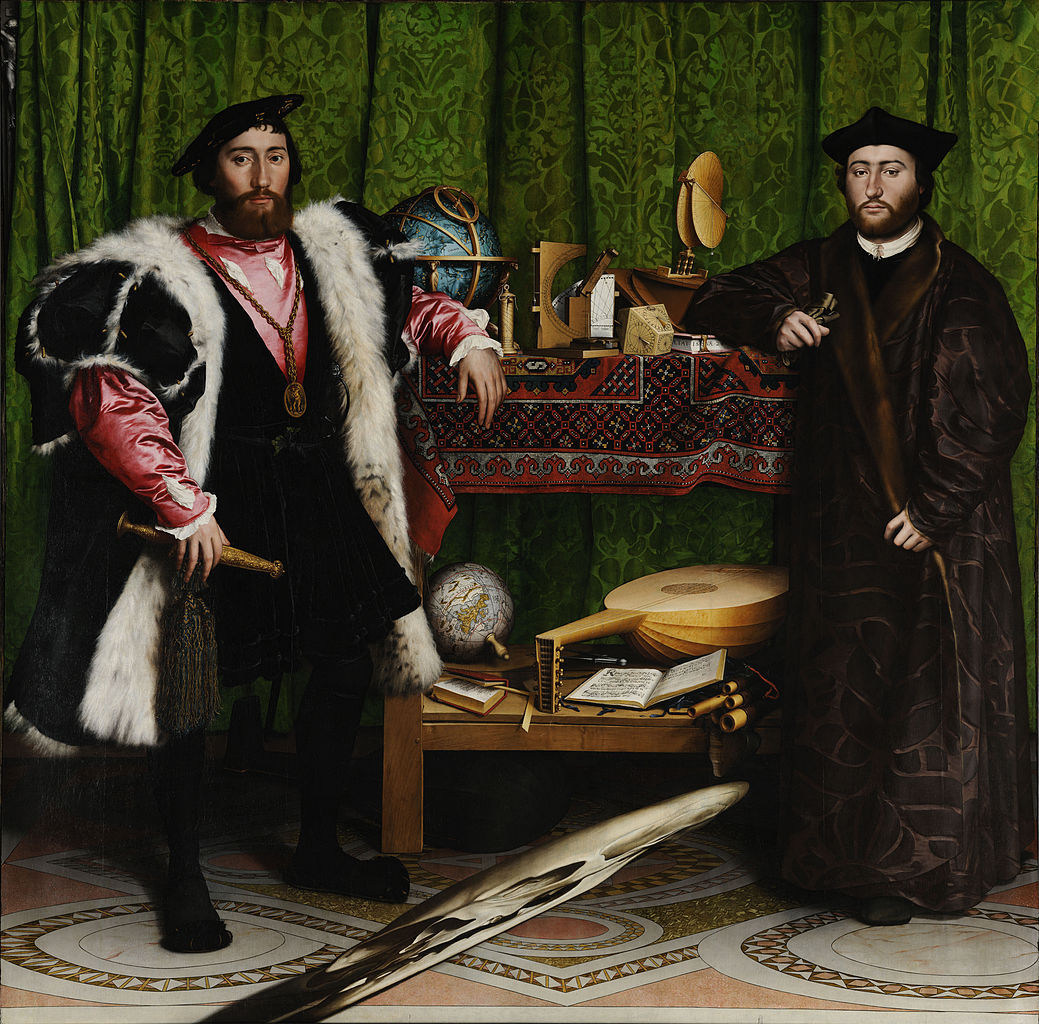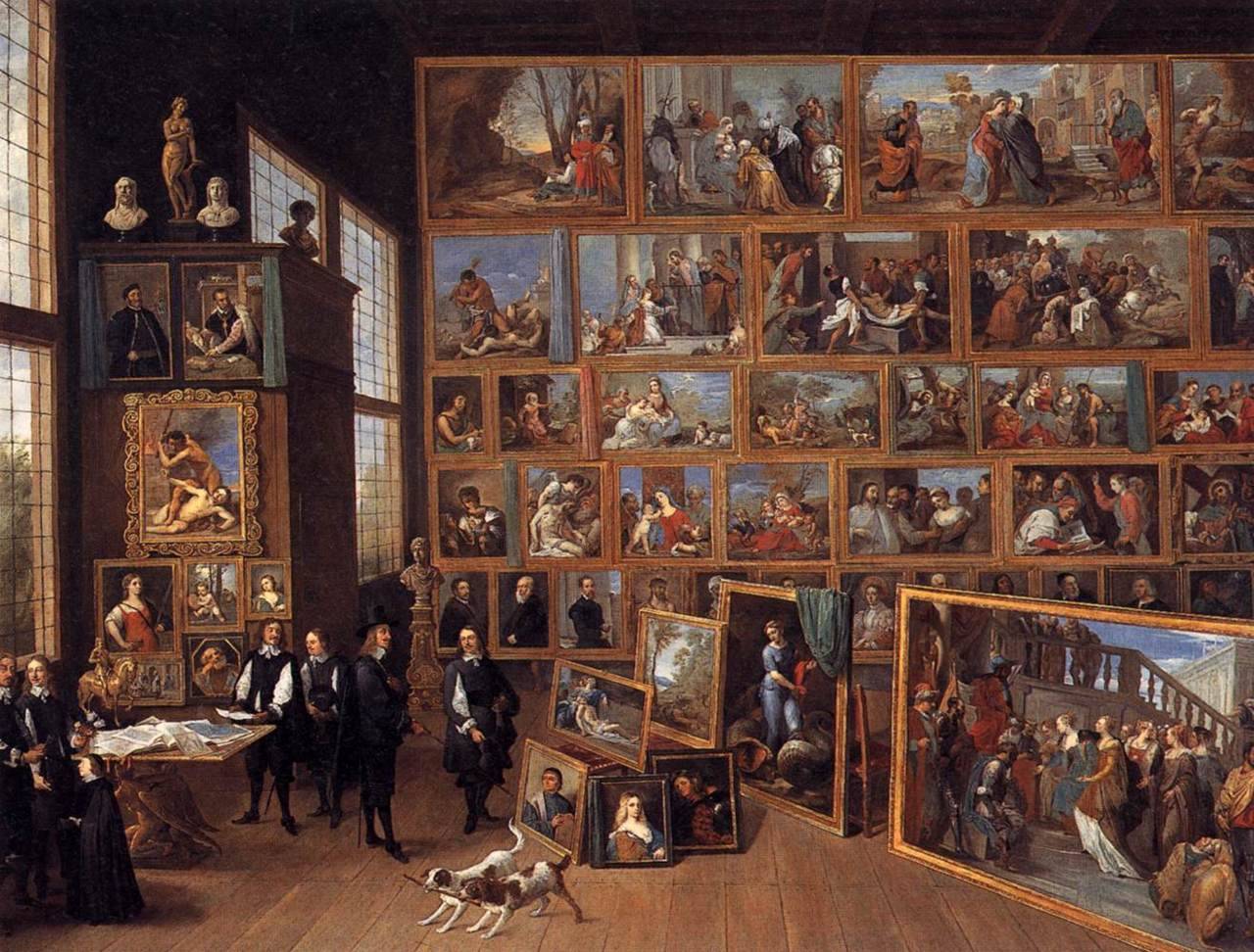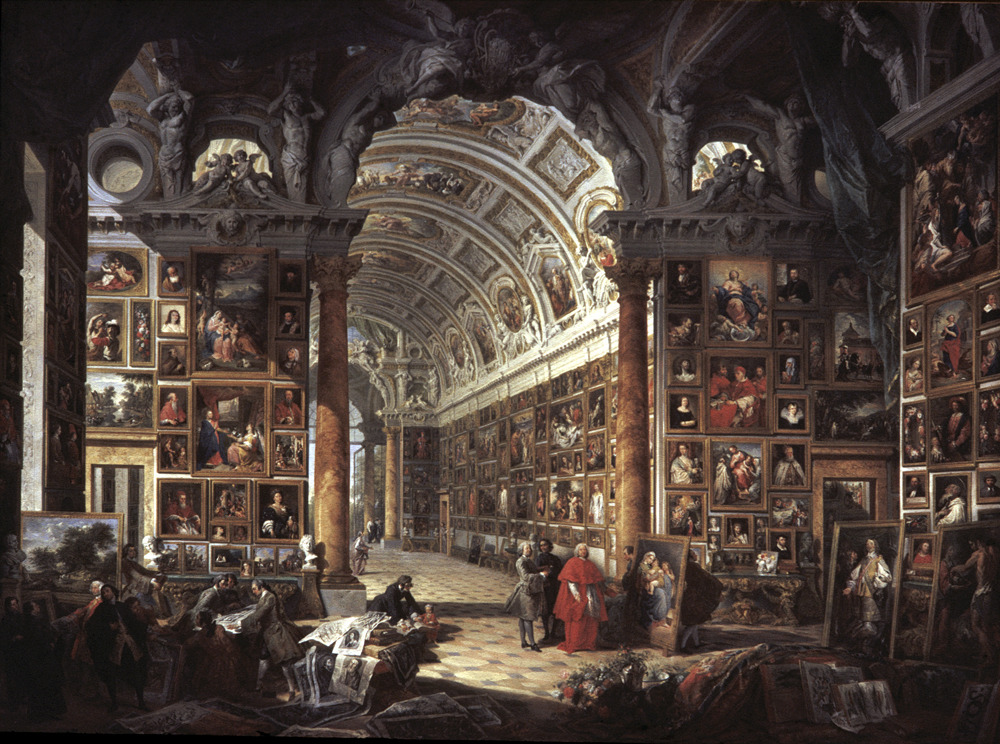pinterest circa 1600 lévi strauss writes as

The Ambassadors (Holbein) 
The Archduke Leopold Wilhelm 
Interior of a Picture Gallery
Pinterest, circa 1600.
Lévi-Strauss writes, as quoted by John Berger:
For Renaissance artists, painting was perhaps an instrument of knowledge but it was also an instrument of possession, and we must not forget, when we are dealing with Renaissance painting, that it was only possible because of the immense fortunes which were being amassed in Florence and elsewhere, and that rich Italian merchants looked upon painters as agents, who allowed them to confirm their possession of all that was beautiful and desirable in the world. The pictures in a Florentine palace represented a kind of microcosm in which the proprietor, thanks to his artists, had recreated within easy reach and in as real a form as possible, all those features of the world to which he was attached.
Oil Painting, as a genre, used extreme realism to communicate wealth and possession. Today, such extreme realism is accessible by anyone with an internet connection or a cheap digital camera. There’s no need to to hire expensive painters; anyone can associate with any thing.
Instead of showing off possession, sites like Pinterest allows you to show off taste.
While more egalitarian, it’s still just people posing with their associated stuff. If Berger’s argument applies to this age as well, every Like and Pin will be largely forgotten.